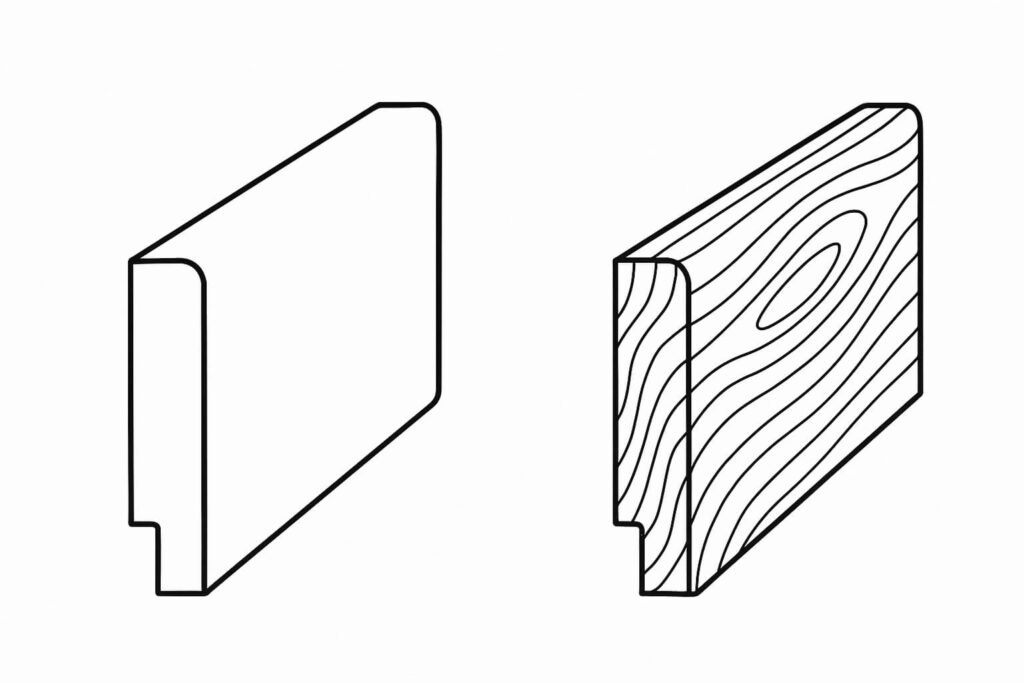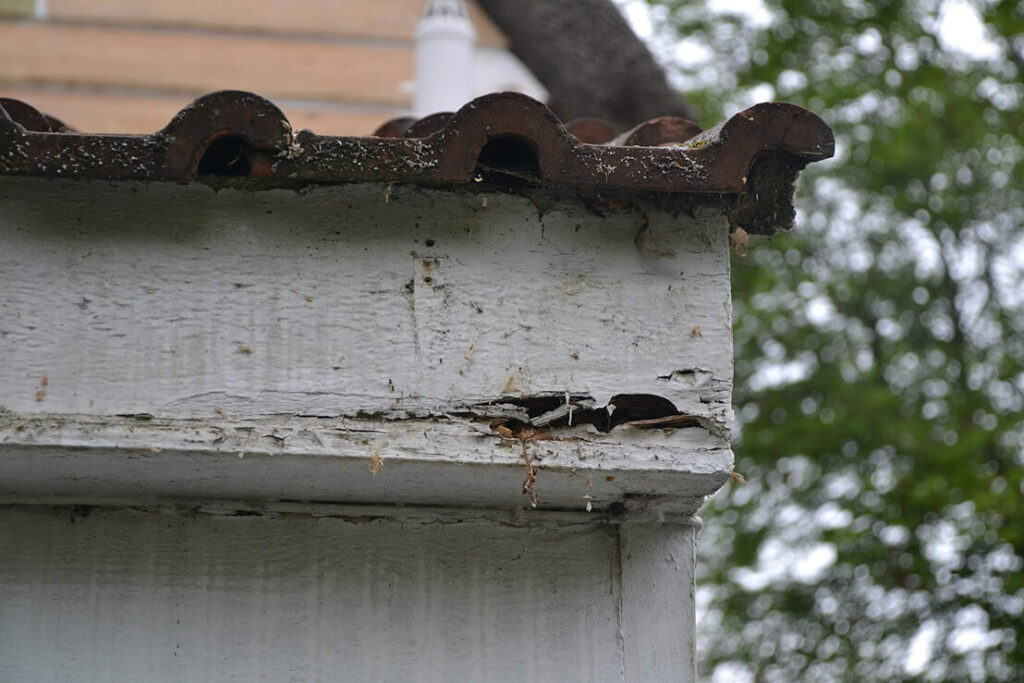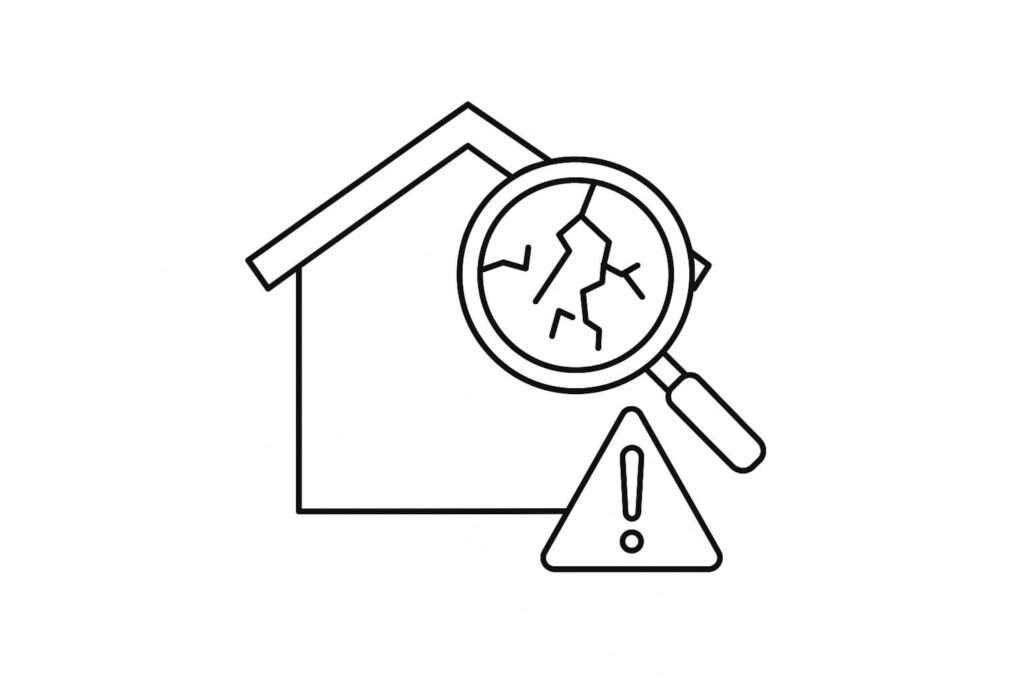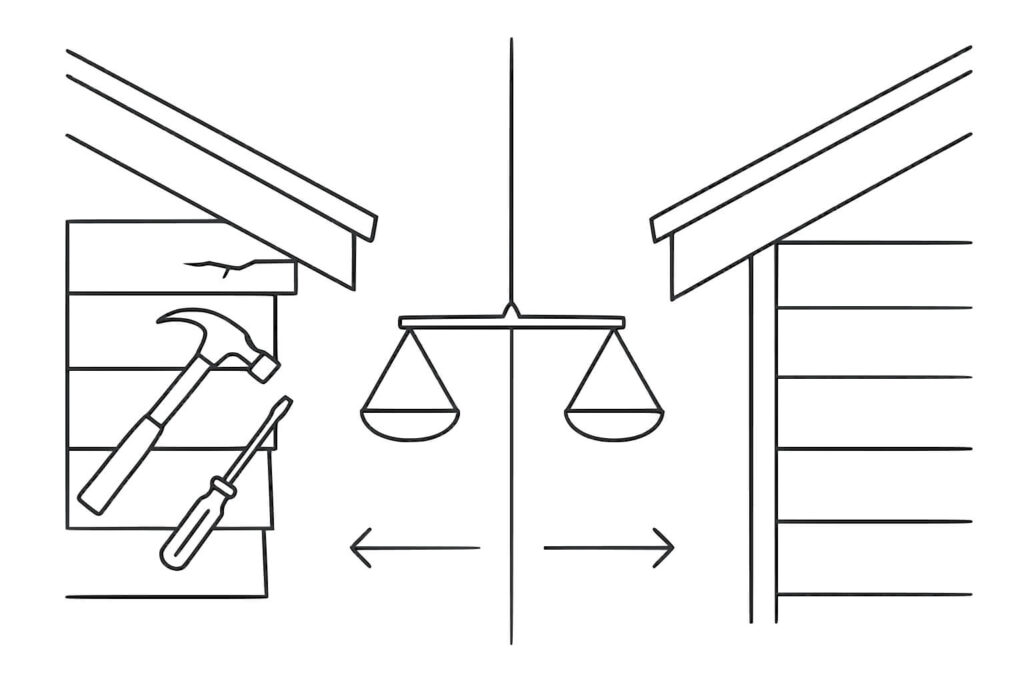Cost to Replace Soffits and Fascias: Complete UK Price Guide 2025
Understanding the cost to replace soffits and fascias is essential for homeowners planning roofline improvements, as these critical components protect your home from weather damage while supporting guttering systems and maintaining proper roof ventilation. This comprehensive guide provides detailed UK pricing information, cost factors, and expert insights to help you budget accurately for your roofline replacement project.
Average UK Replacement Costs 2025
The cost to replace soffits and fascias in the UK varies significantly based on property size, material selection, access requirements, and regional pricing differences. Current market rates for 2025 reflect increased material costs and skilled labor demand, making accurate budgeting essential for successful project planning.
Standard Semi-Detached House Costs
A typical three-bedroom semi-detached house requires approximately 30-40 linear meters of fascia and soffit replacement, with total project costs ranging from £2,400 to £4,800 depending on material selection and installation complexity. This price range includes removal of existing materials, preparation work, new installation, and waste disposal.
UPVC replacement for a standard semi-detached property typically costs between £2,400 and £3,600, representing excellent value for long-term durability and minimal maintenance requirements. This investment provides 25-30 years of reliable protection with minimal ongoing maintenance costs.
Timber replacement costs range from £3,200 to £4,800 for the same property size, reflecting higher material costs and increased installation complexity. While timber requires more maintenance, it offers superior aesthetic flexibility and authentic appearance for period properties.
Terraced House Replacement Costs
Terraced houses typically require 20-30 linear meters of roofline work, with replacement costs ranging from £1,800 to £3,600 depending on material selection and access requirements. The reduced perimeter of terraced properties provides cost savings compared to detached alternatives.
Victorian terraced properties often feature decorative elements and complex rooflines that increase installation complexity and costs. Heritage-appropriate materials and specialized installation techniques can add 20-30% to standard replacement costs but ensure authentic restoration results.
Modern terraced developments typically feature straightforward rooflines and standard dimensions that enable efficient installation and competitive pricing. These properties often provide the best value for roofline replacement investments.
Detached House Cost Considerations
Detached houses require the most extensive roofline work, typically involving 50-70 linear meters of fascia and soffit replacement with total costs ranging from £4,000 to £8,400 depending on size and complexity. The increased perimeter and often more complex rooflines of detached properties require additional materials and installation time.
Large detached properties with complex rooflines, multiple levels, or architectural features can exceed £10,000 for complete replacement. These properties often justify premium materials and specialized installation techniques that provide superior long-term value.
Access requirements for detached properties vary significantly based on height, surrounding landscaping, and proximity to boundaries. Challenging access can add 15-25% to installation costs but ensures safe and professional completion of the work.
Material Cost Breakdown and Comparison
UPVC System Costs
UPVC fascias and soffits represent the most cost-effective long-term solution, with material costs ranging from £15-25 per linear meter for standard profiles and colors. Premium UPVC systems with woodgrain finishes or contemporary colors cost £20-30 per linear meter but provide enhanced aesthetic appeal.
Installation costs for UPVC systems range from £25-40 per linear meter, reflecting the specialized tools and techniques required for proper installation. The total installed cost of £40-65 per linear meter provides excellent value considering the 25-30 year service life and minimal maintenance requirements.
UPVC system benefits include comprehensive warranties, factory-matched components, and integrated ventilation solutions that provide superior performance compared to mixed-material approaches. These systems offer the best total cost of ownership for most residential applications.
Timber System Costs
High-quality timber fascias and soffits cost £20-35 per linear meter for materials, with premium hardwood species commanding higher prices. Softwood alternatives cost £15-25 per linear meter but require more frequent maintenance and have shorter service lives.
Installation costs for timber systems range from £30-50 per linear meter due to increased cutting, fitting, and finishing requirements. The total installed cost of £50-85 per linear meter reflects the craftsmanship required for quality timber installation.
Ongoing maintenance costs for timber systems include regular painting or staining every 3-5 years at £8-12 per linear meter, plus periodic repairs and eventual replacement after 15-20 years. These ongoing costs significantly impact the total cost of ownership.
Hybrid System Options
Hybrid systems combining UPVC fascias with timber soffits or vice versa can provide cost savings while maintaining aesthetic preferences. These systems typically cost £35-55 per linear meter installed, offering compromise solutions for specific requirements.
Compatibility considerations for hybrid systems require careful material selection and installation techniques to ensure proper integration and weather sealing. Professional installation is essential for optimal performance of mixed-material systems.
Long-term maintenance for hybrid systems requires understanding of different material requirements and coordinated maintenance schedules. These systems can provide good value when properly designed and maintained.
Factors Affecting Replacement Costs
Property Size and Complexity
Linear footage represents the primary cost driver for fascia and soffit replacement, with most contractors pricing work per linear meter of roofline perimeter. Accurate measurement is essential for reliable cost estimates and project budgeting.
Roofline complexity including multiple levels, dormers, bay windows, and architectural features increases installation time and material waste, typically adding 15-30% to standard replacement costs. Complex rooflines require specialized cutting, fitting, and finishing techniques.
Height and access requirements significantly affect installation costs, with single-story properties providing the most cost-effective installation conditions. Two-story and higher properties require scaffolding or specialized access equipment that increases project costs.
Regional Price Variations
London and South East England typically command premium pricing 15-25% above national averages due to higher labor costs, material transportation, and regulatory requirements. These areas also feature more complex properties and challenging access conditions.
Northern England and Scotland often provide more competitive pricing, with costs typically 10-15% below national averages. However, material transportation costs and weather-related installation challenges can offset some regional savings.
Rural areas may experience higher costs due to material transportation, limited contractor availability, and challenging access conditions. However, reduced regulatory complexity and simpler properties can provide offsetting savings.
Seasonal Cost Fluctuations
Spring and summer represent peak demand periods for roofline work, with pricing typically 10-15% higher than winter rates. However, optimal weather conditions ensure efficient installation and superior results during these periods.
Winter installation can provide cost savings but requires careful weather monitoring and may result in extended project timelines. Quality contractors maintain year-round availability and adjust techniques for seasonal conditions.
Material costs fluctuate seasonally based on demand patterns and manufacturing schedules. Planning projects during off-peak periods can provide material cost savings while ensuring contractor availability.
Additional Cost Considerations
Scaffolding and Access Equipment
Scaffolding costs range from £400-800 for standard residential properties, depending on height, duration, and access requirements. Complex properties or challenging access conditions can increase scaffolding costs significantly.
Alternative access methods including cherry pickers or ladder systems may provide cost savings for specific applications but require careful safety assessment and appropriate insurance coverage. Professional contractors select optimal access methods based on safety and efficiency considerations.
Scaffolding duration affects total project costs, with efficient contractors minimizing rental periods through proper planning and execution. Weather delays can extend scaffolding requirements and increase associated costs.
Waste Disposal and Site Preparation
Waste disposal costs for existing fascia and soffit removal typically range from £200-400 per project, depending on material type and local disposal fees. Asbestos-containing materials require specialized disposal and significantly higher costs.
Site preparation including protection of landscaping, vehicles, and building surfaces adds £100-200 to project costs but prevents damage and ensures professional results. Proper preparation demonstrates contractor professionalism and attention to detail.
Cleanup and restoration services ensure your property is left in pristine condition upon project completion. Professional contractors include comprehensive cleanup in their pricing and guarantee complete site restoration.
Permit and Regulatory Costs
Planning permission is rarely required for like-for-like fascia and soffit replacement but may be necessary for material changes in conservation areas or listed buildings. Planning application costs range from £200-400 plus consultant fees.
Building regulations approval may be required for structural modifications or significant changes to ventilation systems. Building control fees typically range from £150-300 depending on local authority requirements.
Conservation area consultation and heritage specialist advice can add £500-1,500 to project costs but ensure appropriate solutions for historic properties. These costs represent essential investments in preserving architectural heritage.
For detailed information about our professional installation services, visit our fascia repair services page which outlines our comprehensive approach to roofline replacement and restoration.
Cost-Saving Strategies and Value Optimization
Combined Project Savings
Coordinating fascia and soffit replacement with guttering renewal can provide significant cost savings through shared scaffolding, reduced setup costs, and bulk material pricing. Combined projects typically save 15-25% compared to separate installations.
Timing roofline work with other exterior maintenance including roof repairs, exterior painting, or window replacement maximizes scaffolding utilization and provides additional cost efficiencies. Comprehensive exterior renovation projects often provide the best overall value.
Group purchasing with neighbors for similar work can provide material cost savings and contractor efficiency benefits. Coordinated neighborhood projects demonstrate community cooperation while reducing individual costs.
Material Selection Optimization
Standard UPVC profiles and colors provide excellent performance at competitive prices, while premium options add cost without necessarily improving functionality. Careful material selection balances aesthetic preferences with budget constraints.
Bulk material purchasing for larger projects provides cost savings that professional contractors pass on to customers. Established contractors maintain supplier relationships that ensure competitive material pricing and reliable availability.
Long-term value analysis considers total cost of ownership including maintenance requirements, energy efficiency benefits, and property value enhancement. UPVC systems typically provide superior long-term value despite higher initial costs compared to basic alternatives.
Contractor Selection and Negotiation
Multiple quotations from qualified contractors ensure competitive pricing while enabling comparison of services, warranties, and approaches. However, the lowest price may not represent the best value when quality and service are considered.
Seasonal scheduling during off-peak periods can provide cost savings while ensuring contractor availability and attention to detail. Flexible scheduling demonstrates customer cooperation and may result in preferential pricing.
Payment terms and project scheduling can affect total costs, with contractors often providing discounts for prompt payment or flexible scheduling. Clear communication about budget constraints enables contractors to suggest cost-effective alternatives.
Return on Investment and Property Value Impact
Energy Efficiency Benefits
Proper soffit ventilation reduces energy costs by maintaining optimal roof space temperatures and preventing moisture-related problems. Annual energy savings of £100-200 are typical for properly ventilated roofline systems.
Improved insulation performance from proper ventilation and weather sealing enhances overall home energy efficiency. These improvements contribute to higher Energy Performance Certificate ratings and reduced utility costs.
Long-term energy savings often offset roofline replacement costs over the system’s service life, making quality installation an investment rather than an expense. Professional installation ensures optimal energy efficiency benefits.
Property Value Enhancement
Quality roofline replacement typically adds 1-2% to property value while preventing potential deductions from poor roofline condition. This value enhancement often exceeds the replacement cost for well-maintained properties.
Curb appeal improvements from new fascias and soffits enhance first impressions and marketability. Properties with modern, well-maintained rooflines sell faster and command premium prices compared to those requiring roofline work.
Insurance benefits from proper roofline maintenance include potential premium reductions and improved claim outcomes. Well-maintained properties demonstrate responsible ownership and reduced risk profiles.
Long-term Cost Avoidance
Preventive replacement avoids costly emergency repairs, water damage, and structural problems that result from failed roofline systems. Emergency repairs typically cost 2-3 times more than planned replacement projects.
Structural protection from proper roofline function prevents expensive damage to roof timbers, interior finishes, and building contents. The cost of preventing water damage far exceeds roofline replacement costs.
Maintenance cost reduction from modern materials and professional installation provides ongoing savings throughout the system’s service life. UPVC systems eliminate painting costs and reduce repair requirements compared to traditional materials.
Financing Options and Budget Planning
Payment Methods and Terms
Most contractors accept various payment methods including cash, check, bank transfer, and credit cards. Payment terms typically require deposits of 10-20% with balance due upon completion, though larger projects may include progress payments.
Finance options through contractor partnerships or third-party providers can spread costs over 2-5 years with competitive interest rates. These options make quality roofline replacement accessible without depleting savings or emergency funds.
Home improvement loans from banks or building societies often provide competitive rates for roofline replacement projects. These secured loans typically offer better terms than credit cards or unsecured alternatives.
Budget Planning Strategies
Comprehensive cost estimates should include materials, labor, scaffolding, permits, and contingencies to avoid budget surprises. Professional contractors provide detailed quotations that enable accurate budget planning.
Contingency allowances of 10-15% accommodate unexpected discoveries or changes during installation. Older properties particularly benefit from contingency planning due to potential hidden issues.
Seasonal budget planning enables optimal timing for cost savings and contractor availability. Planning roofline replacement 6-12 months in advance provides time for budget accumulation and contractor selection.
Insurance and Warranty Considerations
Home insurance may cover storm damage or sudden roofline failure, but gradual deterioration typically requires homeowner funding. Understanding insurance coverage helps plan replacement timing and funding strategies.
Contractor warranties provide protection for materials and workmanship, typically ranging from 5-15 years depending on materials and contractor policies. Comprehensive warranties demonstrate contractor confidence and provide customer protection.
Extended warranty options may be available for premium materials or installation services. These warranties provide additional protection but should be evaluated based on cost-benefit analysis and contractor reputation.
Contact us today for a free, detailed quotation for your fascia and soffit replacement project. Our experienced estimators provide comprehensive cost breakdowns and expert guidance to help you make informed decisions about your roofline investment.




